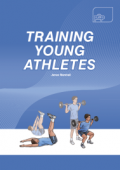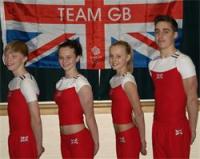Main Menu
Latest Blog Entry
User login
Athletic training in practice: Tom Kurz
For many of our athletes Hindu press ups and Hindu squats are a regular feature of our training. I got these from today’s guest author Tom Kurz. He is an example of a Coach practitioner who sets a great example to others. His book “Science of sports training” is an excellent and very readable resource.

“I will begin with tips not for the the young athletes themselves but for those who train them. I begin by commenting on a concept from the post by Frank Dick, “before you get into teaching young people techniques they must have the physical competencies to do so without building in compensatory movements.”
I don’t distinguish very much between teaching general exercises and sport-specific exercises (techniques of the sport). In both cases one has to observe athletes to see whether they are ready for the exercises, if needed correct their defects, and then, with the defects seemingly corrected, still correct those defects or others as the exercises reveal them.
To do so effectively one has to pay attention to the athletes and know how to dose the exercises, their form and internal load. (External load = External resistance, number of reps, distance, etc. Internal load = Physiologic effect of the external load.)
Now I will end the fuzzy generalities and give examples.
A gymnast learns vaults. Soon after the warm-up he does well, but as the workout progresses his form gets worse. Eventually he misses jumps, more and more, and yet the coach encourages him to keep trying as if trying harder could help when inhibitions have set in. The coach is not paying attention to a technical flaw in the landing on arms, that in turn has its source in a posture defect. Every landing is causing a discomfort and raising an alarm in the athlete’s motor centers, “This hurts, this
damages, stop this.”
A young female gymnast lags behind the group in hip flexibility. She is skinny but much taller then the rest of the group. Her Russian coach, a former gymnast, makes her do the same flexibility exercises as the rest of the group, even though they evidently don’t work for her. The coach has no clue that there are other flexibility exercises than those that work only with little children built for gymnastics. The coach has no understanding of anatomy that would give him a way of adjusting her position in stretches so to make them effective for her.
A high school track-and-field sprinter has a pronounced upper and lower cross posture, which forces his legs and arms to move in inefficient patterns. His coach, a high school p. e. teacher, has never given him corrective exercises. The athlete was allowed to sprint prior to undergoing a corrective exercise program.
A judo wrestler ends a practice bout, and walks off the mat with a slight limp, which he had not prior to this bout. Time for another bout, so he steps on the mat again, with a limp. His instructor acts like all is well. I stop the wrestler and order him to have his knee examined. The exam revealed a severely sprained ACL, that took several months of rehab to get back to normal.
Now tips for the young athletes themselves.
A good technique feels comfortable. If it does not, then you are taught wrong. It does not matter whether you were not prepared well for learning that technique, or you were taught a wrong technique, or you have misunderstood the instruction–you were taught wrong. It is a responsibility of the instructor to instruct according to the athletes’
capabilities.
The most effective training loads (resistance, number of reps, distance, etc.) are such that do not distort good form. If your form in exercises or techniques deteriorates, you are doing too much. You are erasing good technical habits and ingraining bad ones.
A good coach is the one who looks at the athletes when they exercise and not into notes on a clipboard or in a laptop, notepad, or whatever. If your coach or instructor doesn’t catch your errors on the first or second repetition, you need to go elsewhere for instruction.”
Read more from Coach Kurz on the practical application of principles of training at Stadion Publishing and also his blog
Thanks to all of our guest authors who have given such great tips on training young athletes. It is very useful to hear from such a wealth of experience.
 If you wish to have an easy to follow guide to training young athletes, then click on the book cover to the right. I wrote this standing on the shoulders of giants.
If you wish to have an easy to follow guide to training young athletes, then click on the book cover to the right. I wrote this standing on the shoulders of giants.
Client Testimonials
 Weston AGC
Weston AGC
I first met James at a South West Gymnastic conference and thought he was superb then, and still do! James' ability to adapt to different sports and levels is excellent, and he is superb at getting his message across to different ages of gymnasts. He did a workshop at our club for our competitive gymnasts and it was superb, His work was of great value to a wide range of ages and levels, with a tremendous emphasis on posture and injury prevention. We have been able to put his training methods into practice and are seeing an improvement in the all round strength and fitness of our gymnasts.
More

